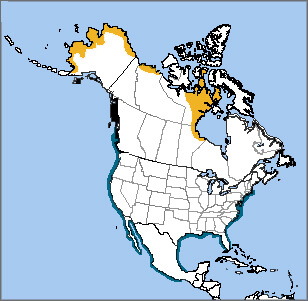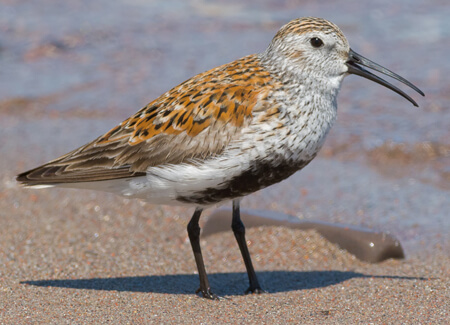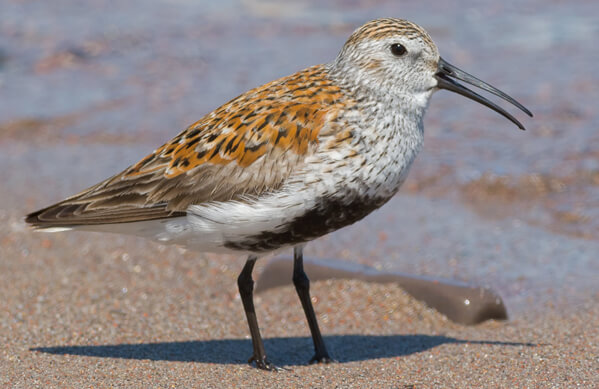 The cosmopolitan Dunlin breeds in Arctic or subarctic regions around the world and has ten recognized subspecies. Birds breeding in Alaska and Canada migrate short distances to winter along the coastlines of North America.
The cosmopolitan Dunlin breeds in Arctic or subarctic regions around the world and has ten recognized subspecies. Birds breeding in Alaska and Canada migrate short distances to winter along the coastlines of North America.
Although widely distributed and currently abundant, Dunlin populations seem to be declining, and the species is listed on the 2014 State of the Birds Watch List. Like other migratory shorebirds such as the Red Knot, Long-billed Curlew, and Buff-breasted Sandpiper, the Dunlin is threatened by habitat loss caused by wetland draining, global warming, and invasive plants, particularly at migration staging and wintering areas. This species is also vulnerable to avian influenza.
A group of Dunlin are known as a "flight," "fling," or "trip." Wintering Dunlin can occur in huge flocks, and their coordinated flight maneuvers as they try to evade falcons and other aerial predators are an impressive sight.
Sign up for ABC's eNews to learn how you can help protect birds

Dunlin by Paul Reeves Photography, Shutterstock
The feathers of winter birds are plain gray and brown (or dun, which led to the species' common name), but Dunlin can still be distinguished by their medium-length, decurved bills.
The birds nest in a shallow scrape on the ground lined with vegetation, and the downy, precocial young leave the nest soon after hatching.
Insects form the main part of the Dunlin's diet on the nesting grounds; they eat mollusks, worms, and crustaceans during the winter and on migration.
ABC's conservation work benefits Dunlin in a variety of ways. Learn more about ABC's efforts to protect shorebirds, especially on the Gulf Coast, on our Help Gulf Birds website.
Donate to support ABC's conservation mission!



















































